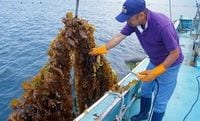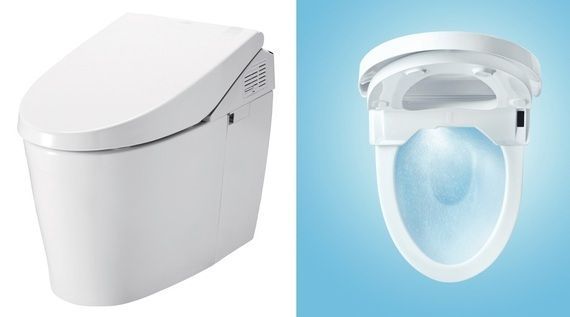
Japanese toilets are no longer just a place to relieve oneself. The Japanese have managed to develop unique toilets by combining their love for cleanliness and advanced technology to refine their toilet environment.
What kind of influence did the culture of Japanese toilets bring to the world? We asked TOTO, the first company to domestically manufacture Western style toilets, about the 100-year history of the development of Japanese toilets.
The reversal of the Japanese style and Western Style in 1977
The toilet lid opens automatically. When you sit, you expect the seat to be warm, as if it was a matter of course. After you relieve yourself, the toilet flushes automatically as you rise from the seat. As you move away from the toilet, the cubicle is automatically deodorized — Before anyone had noticed, the Japanese had become the world’s highest authority on toilet environment.
As people got used to the comfort level, they took for granted these features as if they had always existed. In reality, the path was long and treacherous to get to where it is now.
“It was in the year 1977 that the unit shipments for TOTO’s Japanese style toilets and Western style toilets made a reversal. 37 years prior, Japanese style toilets made up for half of the total shipments. As time passes, the Japanese people changed their lifestyle bit by bit,” said Yoshinori Kuwabara, a representative from the company’s Public Relations Department.
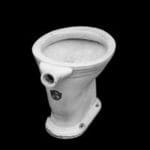
In the year 1914, Kazuchika Ōkura, TOTO’s first President, and his father Magobē Ōkura were the first to manufacture Western style toilet (sitting-style flush toilets) domestically. It is surprising that Western style toilets existed in Japan 100 years ago.“It was a little too early to manufacture them domestically, and the use of Western style toilets was not widespread. At the time, the installation of the toilets were limited to places such as the National Diet Building, high class hotels, and mansions owned by the wealthy. Squat toilets were still mainstream, and were installed in schools, companies, and households in general.”
To the Japanese people who had never felt inconvenienced by squat toilets, no matter how much they are persuaded that sitting-style flush toilets are more comfortable; they would simply refuse and gave the reason that “squatting is just fine.” The Japanese lifestyle and culture did not incorporate the use of chairs to begin with. They sit on the tatami (straw mats used as flooring material in Japanese-style homes), eat on the chabudai (short-legged table), and when they have finished eating they will put away the chabudai and lay out the futon (traditional Japanese bedding) and sleep. There was no specific apparatus for the purpose of sitting down.
In addition to the unfamiliar style, the Japanese did not know how to use flush toilets. “For example, since many people use the iPhone, there are a lot of opportunities to actually see the product, see how it can be used and how convenient it is. However, toilets are installed in private spaces, and there is no way to see how other people use them. So when they see the unfamiliar Western-style toilets in front of them, they felt bewildered.”
During a period of rapid growth in the 1960s, many public housing were built in the metropolitan area. This provided the impetus for the widespread adoption of Western style toilets, of which the expansion had previously been slow. Chairs, tables, and Western style toilets became the standard equipment to be installed in the public housing.
“Since it was installed in the house, people naturally got used to it and became familiar with it. And with that, the status of the Japanese style and Western style toilets finally switched in 1977. In the year 2013, TOTO’s shipments consisted of 99% flush toilets, and 1% squat toilets.”
The evolution of the toilet bowl, how little water is enough to flush?
From this point on, we will differentiate between the toilet bowl and the toilet seat to explain the evolution of the toilet. First is the toilet bowl, and the way that flushing had been improved.
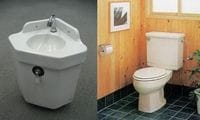
The types of toilets being sold in 1959 had a lever that could switch between heavy and light flush attached to the tank. Each time the heavy flush is used, 20 liters of water goes down the drain, which is approximately 10 big bottles of water. That is a lot of water. “At the time, the main concern was not saving water as much as saving on water bills.”
In the 1970s, the awareness and concern for the environment was heightened due to the oil crisis and pollution problems. Consequently, the water-saving toilet was introduced in 1976. The amount of water used for each flush was reduced to at most 13 liters.
Nevertheless, the challenge continues for TOTO to find out just how far they could go with reducing the amount of water needed to flush.
“Simply flushing to get rid of the waste in the toilet bowl is not enough. It is also important to move the waste down the sewer pipe.”
The tank system makes use of the force from the weight of the water held in the tank to flush, but one drawback is that before the tank is filled with water again, it could not flush. When that happens, the only option is to wait in the cubicle. In addition to that problem, the tanks also take up a lot of space in the already narrow cubicles in Japan.
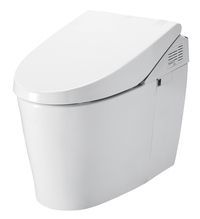
The problem was solved when, in 1993, the first tankless toilet Neorest went on the market in Japan.So how does it flush when there is no tank to hold the water? The toilet is equipped with a microcomputer to control the timing of the water used to clean the toilet bowl, and the water flowing into the sewer pipe. With this system, the amount of water used was reduced to 8 liters.The surface of the toilet bowl is also an important component. If the surface is smooth, it would be hard for dirt to stick onto it in the first place, and less water is needed to clean it. However, toilets are ceramics and thus their surfaces are uneven. There is unevenness even at the micro level, allowing dirt to accumulate and bacteria to breed. In 1999, TOTO developed a proprietary antifouling technology called CeFiONtect, a special glaze applied before firing the ceramic toilet bowls. The combination of the technologies further improved the effectiveness of the water-saving effort, and also led to less frequent cleaning.
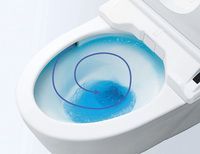
In 2002, the Tornado Flush revolutionized the flushing system. Up until then, flushing meant that water would pour down from under the rim of the toilet bowl like a waterfall. With the Tornado Flush, water would spin inside the toilet bowl and create a whirlpool effect. This completely new idea resulted in less water being used to thoroughly clean the toilet bowl.
Now, the latest model for Neorest only uses 3.8 liters of water for each flush, the industry’s lowest. “A few years ago, TOTO participated at an exhibition in Europe, and when the European toilet manufacturers saw the Tornado Flush, they started to produce toilets with the pseudo-Tornado flushing system (only imitating the appearance of the Tornado, without the effectiveness)”. And with that, TOTO had changed the way the world flushes.
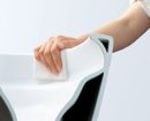
The Tornado had also revolutionized the cleaning of toilets. Since there is no longer any need for the rim to flush, it liberated the many people who had to grapple with cleaning the stubborn dirt that was stuck to the rim. For the people who had to clean toilets either at home or at work, this had to be a historical innovation.
The evolution of the toilet seat. How do you wash your backside?
Next is the evolution of the toilet seats.
TOTO’s pride, the Washlet, first went on the market more than 30 years ago, in 1980. However, TOTO was not the first to come up with a toilet seat that has the function to clean the backside. About 50 years ago in the year 1964, TOTO imported the “Wash Air Seat” from a US company called American Bidet and sold them in Japan.
“This was a product intended for medical use. It was built for people who have hemorrhoids and were not able to wipe their backsides with toilet paper, or for those who are physically weak and find it hard to wipe themselves.”

TOTO again attempted to manufacture the seats domestically, and in 1969 the Wash Air Seat with features that include washing, drying and a heated seat went on the market. However, there were still many problems: the temperature of the warm water is not stable, the angle of the water that shoots out of the nozzle is not right, and customers were complaining and asking for refunds.
Entering the 1970s, the oil crisis caused economic recession. Many within the company saw this as an opportunity in crisis to develop a new product, and in November 1978, it was decided that the company should develop the Wash Air Seat in-house.
However, the company was faced with difficulties that are unique to toilets, since they are installed and used in private spaces.
“First of all, there was no data on the position of the buttocks when someone sits on the toilet. In order to get the data, we asked our employees to monitor the position of their anus when they sit on the toilet, and make a mark on a string that had been attached to the toilet seat. We collected data from a total of 300 people and obtained an average value for adults.”
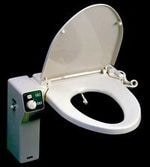
In addition, the trial and error process continued, to find the right temperature of warm water, and the right angle for the water to shoot. The company then derived the “Golden Rule” that warm water temperature should be at 38 degree Celsius, and that the angle should be at 43 degrees. Thus in June 1980, the Washlet was born after just 1 and a half years in development.In 1982, after the “Even Butts Need Washing” commercial was broadcasted, TOTO saw a leap in the recognition of the Washlet by the public. However, it still had not become a necessary part of the people’s lifestyle.
“A majority of the people reasoned that it was sufficient to wipe with toilet paper, so why should they go out of their way to wash their backsides with warm water?” As expected, people resisted the change as they were already familiar with squat toilets, and getting them to switch from Japanese style to Western style toilets required a long period of time.
“First we had to get people to put aside their reluctance, ask them to try using the toilet, and experience how good it is. We came up with straightforward solutions such as sending a mobile showroom to travel around the country so that people can actually experience using flush toilets, and asked employees at plumbing stores that sold toilets to try our toilets and recommend them to customers.”
In the meantime, various features were added to the toilets.

In 1987, in an effort to create the “ultimate toilet”, the Washlet QUEEN was released for sale. It featured the soft closing seat and lid, adjustable nozzle position, deodorizing function, and remote controlled operation, functions that are fit for a Queen.At the time, Japan was in the middle of the bubble economy, and people wanted better toilets that are high-end and have advanced features. That year, the total sales of the Washlet broke through 1 million units.
Entering the 1990s, even as the Japanese economy began to stall, the installations of the Washlets were spreading rapidly in public spaces like hotels, department stores, restaurants, and offices. It was recognized that installing high-grade toilets will garner good reputation amongst the guests and customers, and is tied to providing good customer service. In 1998, the total sales of the Washlet topped 10 million units.
In 1999, the Wonderwave Spray was developed and dramatically changed the way water was sprayed to clean the backside. Apart from being able to completely clean the buttocks, it saves water and electricity through intermittent heating and continuously spraying beads of water. This new feature uses only a third of the water to clean, compared to the model that came before it.
TOTO also aimed to improve on the energy-saving feature for its toilets. Sensors are installed for the “instantaneous seat warmer” function, and toilet seats are warmed immediately when movement is detected. Toilet seats and covers are made of thermal insulation materials, and the lids can automatically open and close to make sure that no one ever forgets to close the covers. The combination of these functions helped them achieve their aim of an energy-saving toilet.
The deodorizing function was also improved. If you walk into the restroom, the sensor can detect your presence and automatically start deodorizing.
After usage, the “Auto Power Deodorizer” will be activated as you move away from the toilet for a more powerful deodorization. Today, almost everywhere you go you could use the toilets without having to touch anything.
Although it took 18 years for the shipments of the Washlet to break through 10 million units, it took 7 more years (on January 2005) to reach 20 million units, and only 6 more years (on January 2011) to top 30 million units. Its spread was accelerating.
Incidentally, there was still demand for Japanese style toilets, and they still make up for 1% of the shipments. “There are people who dislike the fact that their thighs had to touch the toilet seats when using Western style toilets.”
Using the toilet seat to clean the toilet bowl
Up until this point, the toilet bowl and the toilet seat have evolved separately. However, in 2012, a new type of toilet seat with a function to clean the toilet bowl was manufactured. It was the high-end model Washlet that sprays a mist of electrolyzed tap water with sterilization effect onto the nozzle and the toilet bowl.
Including the shower toilets manufactured by other companies, penetration of toilet seats with warm water bidet had reached 76% by March 2014 (Cabinet Office Consumer Confidence Survey). 45 years after the first domestically manufactured Wash Air Seat went on the market, and 34 years after the sale of the first Washlet, the penetration had finally reach more than 70 percent.
The challenges of overseas expansion
What is worrisome is the toilet market outside of Japan. TOTO first forayed into the overseas market in 1977. It established a joint venture in Indonesia, and built a factory there, as its production base for overseas market. It also expanded its business to the US and China in 1989. “It will take a long period of time to fully penetrate the markets around the world, and we are prepared,” said Nariko Yamashita, the company’s representative from the Public Relations Department.

In order to expand overseas, the company had to overcome a number of problems. The biggest problem is electricity. “It is not standard practice to place electrical components near water in other countries, and it takes a lot of time to get special permits.”
There are also differences in lifestyle and way of thinking. “In Europe and the US, the master bedroom, guest room and kids’ room each have a bathroom that includes the shower, sink, and toilet, so each house has more than one toilet. As a result, they could not spend too much money on toilets. If you watch home makeover shows in Europe and the US, they are more willing to spend money on their living rooms, where family members usually gather.”
And then there is the economic situation factor. “There are still many people in Asian countries who earn relatively low income and cannot afford to buy expensive toilets. The same goes for many European countries, where the gap between the rich and poor is overwhelmingly large.”One main approach is to first install TOTO toilets in places like 5-star hotels, airports, and stations to increase customer contact and brand-awareness.
“First, we want to introduce the Washlet into the market for the customers to experience, and then let it spread. The business cycle is very long for our company, so we are thinking of a 30-year span.”
The need to ride with the times
The timespan between buying and replacing a toilet bowl can be counted in the decades. Many people buy toilet bowls when they buy a new house, and never replace them. Although the reason behind the widespread use in Japan is primarily due to the country’s love for cleanliness and its advanced technology, the company was also riding in the tailwind of the high economic growth in the bubble era.
“The cycle is slow, so there are few opportunities to create contact with potential customers. One of the few opportunities is when the economy develops, and new buildings are built. Being able to enter overseas markets is such a valuable opportunity, and it is important to let many people experience and appreciate the Washlet.”
In that regard, people from all over the world will be coming to Tokyo for the 2020 Tokyo Olympics, and it would be a great opportunity for them to experience the state-of-the-art toilet. The visitors would feel the warm sense of hospitality from the moment they step inside the cubicle, until they leave it. Even the toilets should surprise them, and leave them with a whirlpool of positive emotions.




